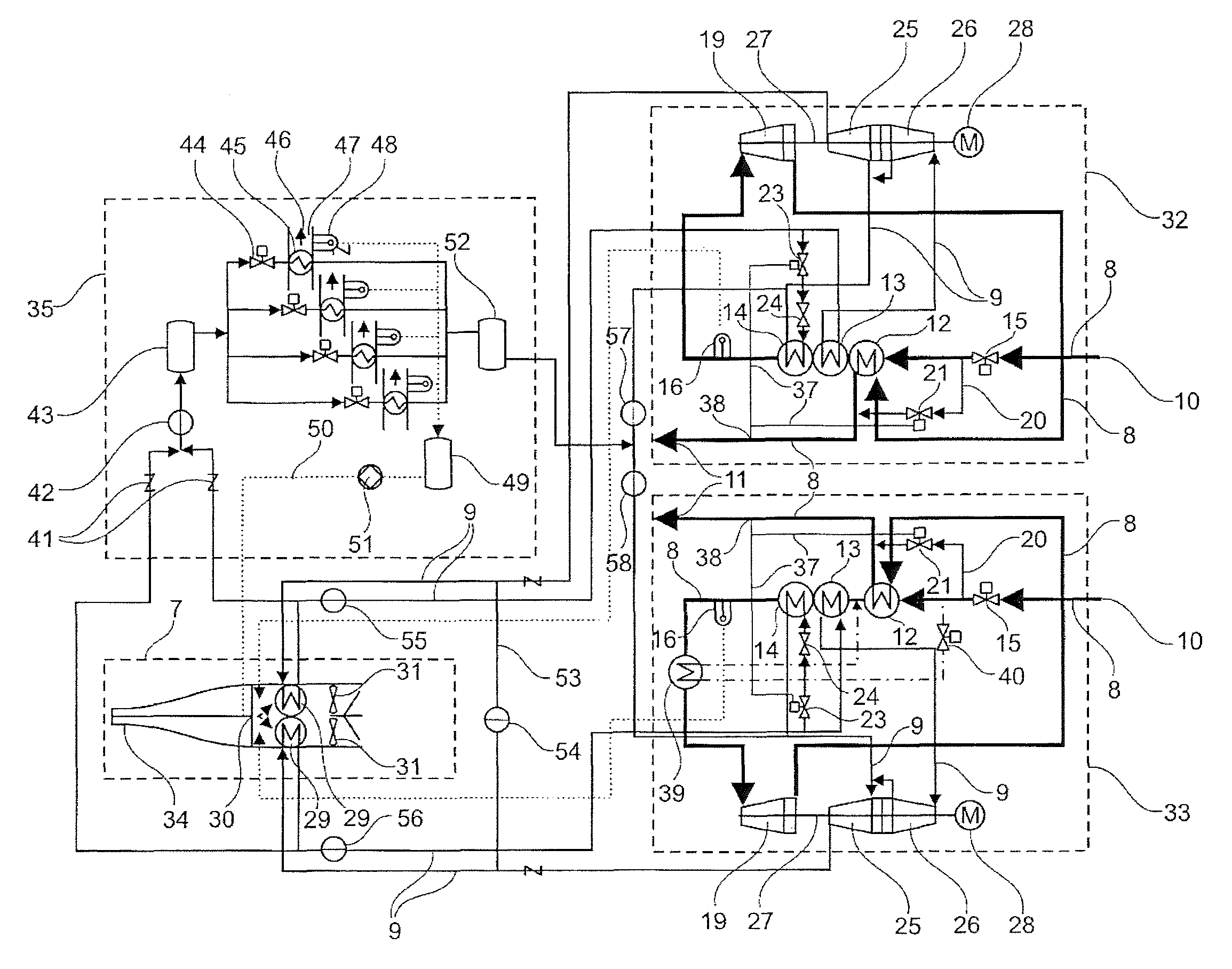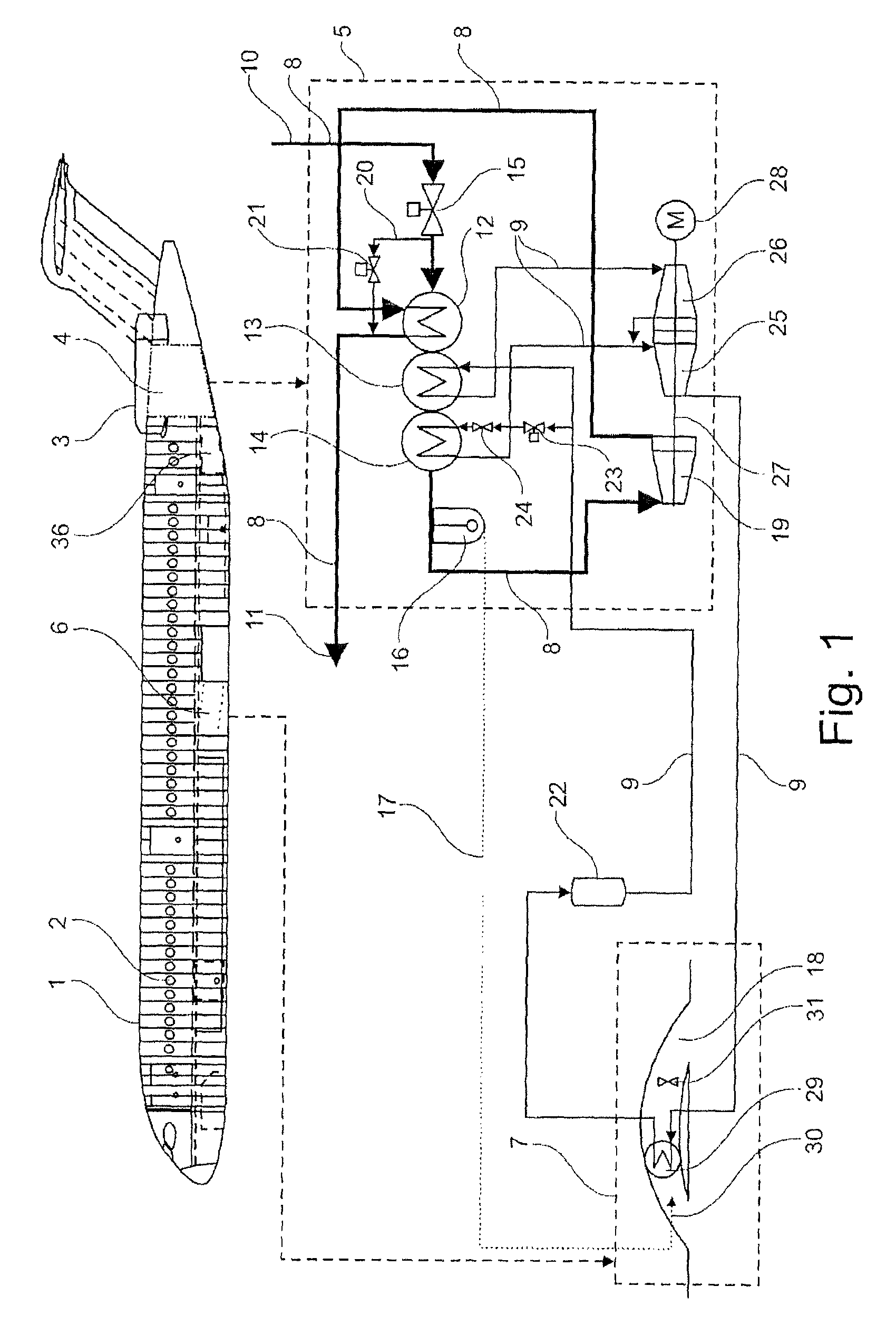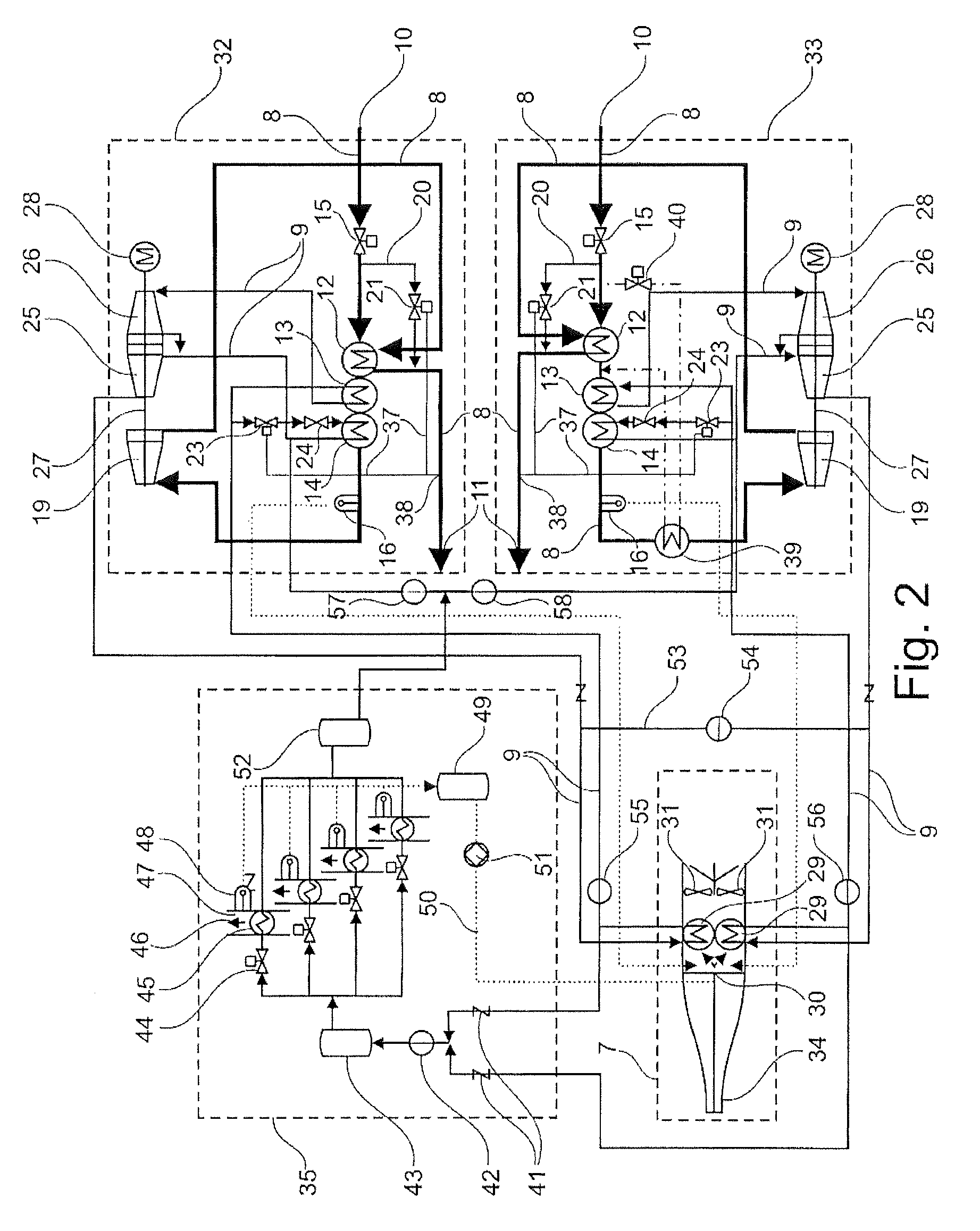Aircraft air conditioning system comprising a separate refrigeration cycle
a refrigeration cycle and air conditioning system technology, applied in the field of air conditioning systems for aircraft, can solve the problems of unfavorable heat emission and system air supply, and achieve the effects of reducing the length of hot bleed air ducts for the air supply of the air-conditioning system, reducing the dimensions of the system and its weight, and reducing the transfer of hot air within the air-conditioning system
- Summary
- Abstract
- Description
- Claims
- Application Information
AI Technical Summary
Benefits of technology
Problems solved by technology
Method used
Image
Examples
Embodiment Construction
[0024]Other features, advantages and possible applications of the present invention result from the following detailed description of preferred exemplary embodiments and the figures. In this respect, all described and / or graphically illustrated characteristics form aspects of the invention individually and in arbitrary combination—namely regardless of their concretely claimed combination or references of the claims to other claims. In the figures, identical or similar elements are furthermore identified by the same reference symbols. Specifications such as “upstream,”“downstream,”“preceding” or “following” respectively refer to the intended fluid flow direction in the respective compressed air branch, refrigerant circuit or ram air duct.
[0025]FIG. 1 shows a schematic design of the air-conditioning system for an aircraft. In this illustration, this aircraft is represented by an airplane 1 with a pressurized cabin 2 and engines 3. Two air-conditioning units 5 are arranged in a tail se...
PUM
 Login to View More
Login to View More Abstract
Description
Claims
Application Information
 Login to View More
Login to View More - R&D
- Intellectual Property
- Life Sciences
- Materials
- Tech Scout
- Unparalleled Data Quality
- Higher Quality Content
- 60% Fewer Hallucinations
Browse by: Latest US Patents, China's latest patents, Technical Efficacy Thesaurus, Application Domain, Technology Topic, Popular Technical Reports.
© 2025 PatSnap. All rights reserved.Legal|Privacy policy|Modern Slavery Act Transparency Statement|Sitemap|About US| Contact US: help@patsnap.com



